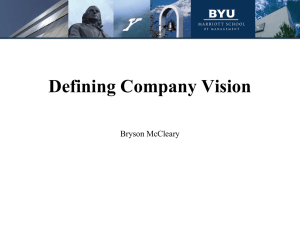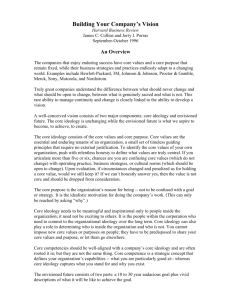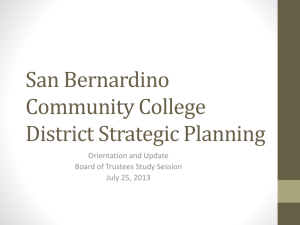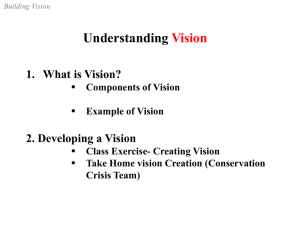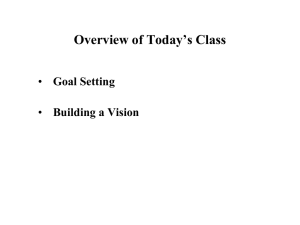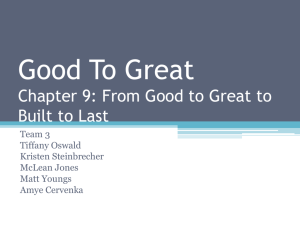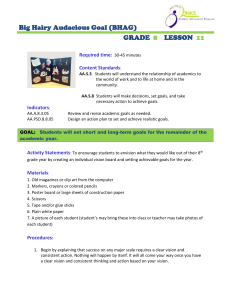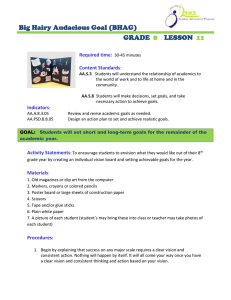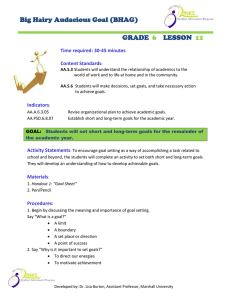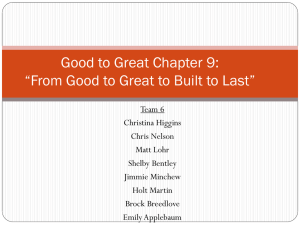Successful Growth Setting the Context PPT
advertisement
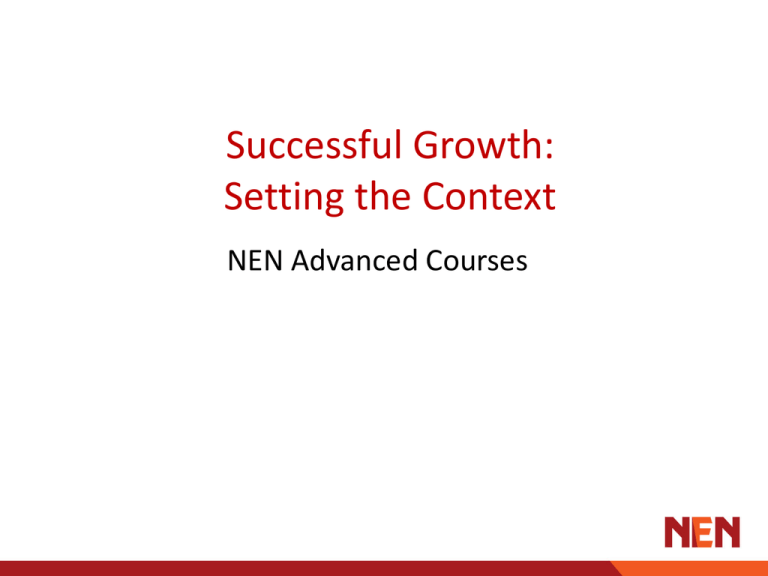
Successful Growth: Setting the Context NEN Advanced Courses Drivers for Growth Own Growth vs. Competitive Growth Competitive Growth Project to Process Better Business Model Desirable Internal Competitive Scenario Own Growth External Rapid Growth Stage Goal Change Business/Relook Proposition Project to Process HAMM’s Why entrepreneurs do not scale • • • • Loyalty to comrades Task Orientation Single mindedness Working in isolation Why entrepreneurs do not scale Some more reasons • The difference between emotional aspirations vs. practical aspects in growing • Assessing competitive environment and firm’s own characteristic strengths • Ability to spot, recruit and retain talent at the right price • Raising adequate capital at the right time • The ‘Customer is King’ trap 3 keys to success and scaling up • Customer acquisition and retention • Organization structure • People mindset Leveraging Growth Opportunities • Kinder Dance Video • Ballet of Success – Case Study Case Questions: Ballet of Success • Should she accept the offer to tie up with this pre-school chain? • What should she do to move forward and reap this growth opportunity? • Is she ready for the challenge? • Why? APPLYING FRAMEWORKS OF GROWTH Successful Growth • Applying frameworks to understand different stages of growth for both large and small businesses • Greiner • Churchill & Lewis How Organizations Grow Evolution Revolution Steady or prolonged growth and Stability Substantial organizational change Quiet periods Turbulent Times No major economic setback or internal disruption Serious upheaval of management practices Modest adjustments to maintain growth Eg: Centralized Practices New sets practices for evolutionary stage Eg : Demands for Decentralization Source: Greiner’s Evolution and Revolution as Organizations grow, HBR , 1998 Greiner’s Five Phases of Growth Large Collaboration Coordination “?“ S i z e Delegation Direction red tape control Creativity autonomy Small leadership Young Age of the Organization Mature Systems, Leadership, Strategy and Stages of Growth • Churchill & Lewis’s Five stages of Small Business Growth – A discussion • Analyzing key factors for growth – an exercise Some Mission statements “ We have committed to synergistically fashion high-quality products so that we may collaboratively and inexpensively provide access to leadership skills in order to solve business problems” Building your Company’s Vision Some more… “It is our job to continually foster world-class infrastructures as well as to quickly create principle-centred sources to meet our customers’ needs” And Some more… “Our challenge is to assertively network economically sound methods of empowerment so that we may continually negotiate performance-based infrastructures” Source: Dilbert’s Automatic Mission Statement Generator Articulating a Vision • Enduring success is rooted in the founder’s vision for the enterprise • Vision provides the context and stimulates progress • What should never change and what should be open for change? • Vision = Core Ideology + Envisioned future Core Values • • • • • Essential and enduring tenets of an organization Intrinsic in value Between 3 and 5 in number Identifying core values – Mars Group What core values do you personally bring to work? • Google: “ Don’t be evil” Core Purpose • Core purpose is a raison d’e^tre not a goal or business strategy • People in truly great companies talk little about earnings per share • Organization’s reason for being • Asking the ‘five Whys’ • Walt Disney – To Make people happy Core Ideology = Core Values + Core Purpose • Core ideology provides the glue that holds an organization together through time • You do not create or set core ideology – YOU DISCOVER IT and you cannot fake it • Core ideology is to guide and inspire; not to differentiate • Meaningful and inspirational for people inside the organization; may not be exciting for outsiders • Find people who share your core values and purposes and let others go Envisioned Future = BHAG + Vivid Description • Big Hairy Audacious Goal (BHAG) • 10-30 year • Unifying focal point of effort and a catalyst for team spirit • Has a clear finish line • NASA’s 1960 moon mission • Only 50-70% of probability of success but organization must believe that it is reachable Types of BHAGs • Target BHAG: Become a 125 bn $ Company by 2000 – Wal-Mart • Common Enemy BHAG: Crush Adidas - Nike in 1960s • Role Model BHAG: Become the Harvard of the West – Stanford University 1940s • Internal Transformation BHAG: From computer component manufacturer to top five computer brands in the world - ACER Vivid Description • Vibrant, Engaging, Specific • Description of what it will be like to achieve the BHAG Visioning Workbook
